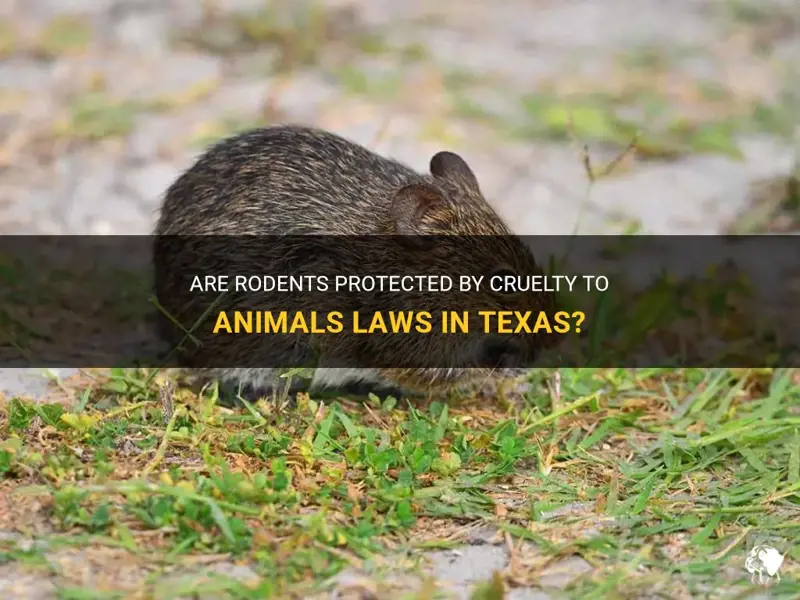In the vast tapestry of the animal kingdom, rodents, particularly rats, often evoke a response that intertwines revulsion and indifference among the populace. Regarded by many as vermin, these creatures exist in a complicated intersect of human perception, urban encroachment, and ecological roles. As society evolves, so too must our understanding of animal welfare, creating an imperative discussion around whether rats, as well as other rodents, fall under the protective umbrella of animal cruelty laws.
To consider if rats are protected by these laws, one must first navigate the murky waters of legal definitions regarding animals. Animal cruelty laws vary significantly across jurisdictions, influenced by historical precedents and societal attitudes toward animals. In many states, definitions of “animal” do not universally include all creatures, particularly those deemed pests. This raises a pivotal inquiry: are rats and similar rodents recognized as sentient beings deserving of legal compassion?
Rats, scientifically classified as rodents, have existed alongside humans for millennia, adapting seamlessly to urban environments. Their resourcefulness often places them at odds with human habitation, prompting a prevalent view that categorizes them as nuisances. Consequently, laws designed to protect animals from cruelty typically focus on domesticated species, leaving rats in a legislative limbo. In some areas, these laws are explicitly exclude vermin species, allowing individuals to manage “pest” populations without legal repercussions.
However, examining the psychological and social dimensions of our relationship with rats reveals a dichotomy between perception and reality. Recent studies on rat behavior indicate complex social interactions, intelligence, and emotional depth. Remarkably, rats have demonstrated empathy, evidenced by their tendency to assist fellow rats in distress. This cognitive ability challenges the perception of rats as mindless pests and begs the question: should they not receive humane treatment regardless of their status as pests?
The evolution of animal rights advocacy has ignited a burgeoning discourse around the notion of rat protection under animal cruelty laws. Organizations advocating for animal welfare argue that even animals traditionally labeled as vermin deserve consideration beyond their role within human environments. The ethical premise here posits that cruelty, irrespective of the species, is an affront to humanity’s moral fabric. Such movements contend that expanding protections to include rats not only fosters a humane approach but also aligns with broader environmental sustainability efforts.
Yet, prevailing attitudes remain resistant to significant shifts. Legislative bodies often grapple with the economic implications of reclassifying pest species under cruelty regulations. The ramifications could hinder pest control practices vital for public health, fostering tension between animal welfare advocates and local authorities. Municipalities heavily dependent on pest control measures to mitigate disease transmission may question the practicality of expanding protections to include rats and similar rodents.
Despite this resistance, a paradigm shift is on the horizon. The contemporary animal rights movement emphasizes a cognitive reevaluation of animals perceived as nuisances. Advocacy campaigns illuminate the lives of these often-overlooked creatures, showcasing their socioeconomic contributions to ecosystems. For instance, in urban settings, rats play a crucial role in waste management, consuming organic matter that would otherwise contribute to pollution and the spread of pests. Their ecological imprint, while contentious, prompts a necessary consideration in the discussion of their legal protection.
Moreover, the focal point of this dialogue also centers around the methods of humanely managing rodent populations rather than extermination. Current pest control practices often involve inhumane traps and toxic extermination methods, prompting ecological disruption and further ethical dilemmas. Advocates argue for the implementation of humane removal strategies that align with a redefined perspective on these sentient creatures. By emphasizing coexistence rather than eradication, society may foster a healthier relationship with all species, transcending traditional dichotomies of pest versus companion.
Additionally, it’s paramount to recognize the compounding effects of climate change on wildlife behaviors. As habitats shift and animal migrations change, encounters between humans and rats are likely to increase. The ensuing interactions could pave the way for legislative change, especially if public sentiment swings toward a more compassionate treatment of all living creatures. Grappling with evolving ecological challenges positions rats as key players in discussions surrounding sustainability and urban biodiversity.
In conclusion, while traditional perceptions of rats are entrenched in cultural and societal views that define them as vermin, an awakening understanding of their sentience and role in nature compels a substantial reevaluation. Legal protections for rodents, including rats, await a transformative shift in societal values and legislative frameworks. The journey toward inclusivity in animal cruelty laws beckons a collaborative effort—one that balances public health concerns with ethical considerations.
Ultimately, the question lingers: can we, as a society, expand our compassion to encompass all living beings, recognizing the intricate tapestry of life that we share? As we ponder this question, the possibility of more humane treatments for rats and other rodents stands not only as a moral obligation but as a testament to our capacity for empathy and understanding in an ever-changing world.





